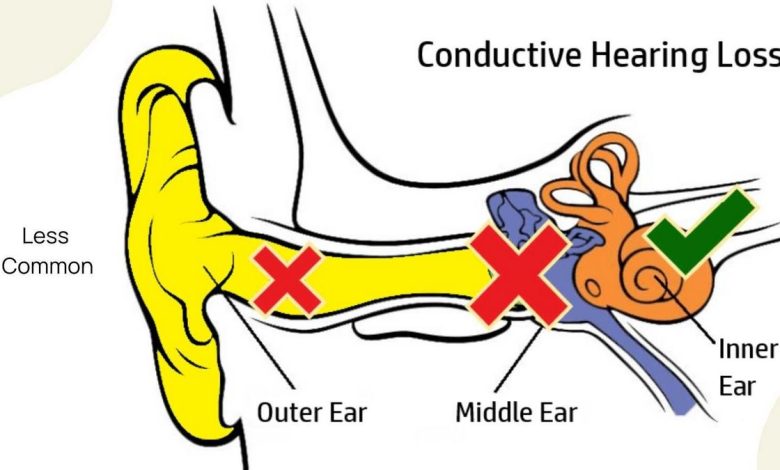Sensorineural deafness: what is this, causes, symptoms, diagnostics, treatment, prevention

Sensorineural deafness; Nerve deafness; Hearing loss – sensorineural; Acquired hearing loss; SNHL; Noise-induced hearing loss; NIHL; Presbycusis
Sensorineural deafness (hearing loss) – it's a type of deafness, which occurs due to damage or defect in the nervous system, responsible for transmitting sound signals from the ear to the brain. This can be caused by many reasons, including birth defects, infection, injury, some types of cancer and some drugs. This type of deafness can be diagnosed with special medical tests and can sometimes be treated with surgery or medication..
Symptoms of neurosensory deafness
Symptoms may include:
- Some sounds are too loud for one ear.
- Are you having trouble tracking conversations?, when two or more people are talking.
- You have hearing problems in noisy places.
- Easier to hear male voices, than women's.
- Difficulty distinguishing high pitched sounds (eg, "and" or "I") from each other.
- Other people's voices are slurred.
- You have hearing problems in the presence of background noise.
- Associated symptoms may include:
- Feeling unbalanced or dizzy (more common in Meniere's disease and acoustic neuromas)
- Ringing or buzzing in the ears (noise in ears)
Causes of neurosensory deafness
The inside of the ear contains tiny hair cells. (nerves), that convert sounds into electrical signals. The nerves then relay these signals to the brain.
Sensorineural hearing loss is caused by damage to these special cells or nerve fibers in the inner ear.. Sometimes hearing loss is caused by nerve damage, transmitting signals to the brain.
Sensorineural deafness, present at birth (congenital), most often cause:
- Genetic Syndromes
- Infection, that a mother passes on to her baby in the womb (toxoplasmosis , rubella , herpes)
Sensorineural deafness can develop in children or adults later in life (Acquired). It can cause:
- Age-related loss of hearing
- Disease of the blood vessels
- immune disease
- Infection, such as meningitis , эpidemicheskiy mumps , scarlet fever and measles
- Ear or head injury
- Loud noises or sounds, that affect hearing for a long time
- Meniere's Disease
- Tumor, such as acoustic neuroma
- The use of some drugs
- Daily work in environments with loud sounds
In some cases the cause is unknown.
What to Expect When Visiting a Doctor for Sensorineural Deafness
The goal of treatment is to improve hearing. It may be useful to use:
- Hearing aids
- Telephone amplifiers and other accessories
- Security and warning systems for the home
- Sign language (for people with severe hearing loss)
- Learning to read lips and using visual cues to help with communication.
For some people with severe hearing loss, a cochlear implant may be recommended.. The implant amplifies the sounds, but does not restore normal hearing.
Used literature and sources
Arts HA, Adams ME. Sensorineural hearing loss in adults. In: Flint PW, Francis HW, Haughey BH, et al, eds. Cummings Otolaryngology: Head and Neck Surgery. 7th ed. Philadelphia, PA: Elsevier; 2021:chap 152.
Eggermont JJ. Types of hearing loss. In: Eggermont JJ, ed. Hearing Loss. Cambridge, MA: Elsevier Academic Press; 2017:chap 5.
Le Prell CG. Noise-induced hearing loss. In: Flint PW, Francis HW, Haughey BH, et al, eds. Cummings Otolaryngology: Head and Neck Surgery. 7th ed. Philadelphia, PA: Elsevier; 2021:chap 154.
National Institute on Deafness and Other Communication Disorders website. Noise-induced hearing loss. NIH Pub. No. 14-4233. www.nidcd.nih.gov/health/noise-induced-hearing-loss. Updated March 16, 2022. Accessed August 9, 2022.
Shearer AE, Shibata SB, Smith RJH. Genetic sensorineural hearing loss. In: Flint PW, Francis HW, Haughey BH, et al, eds. Cummings Otolaryngology: Head and Neck Surgery. 7th ed. Philadelphia, PA: Elsevier; 2021:chap 150.
